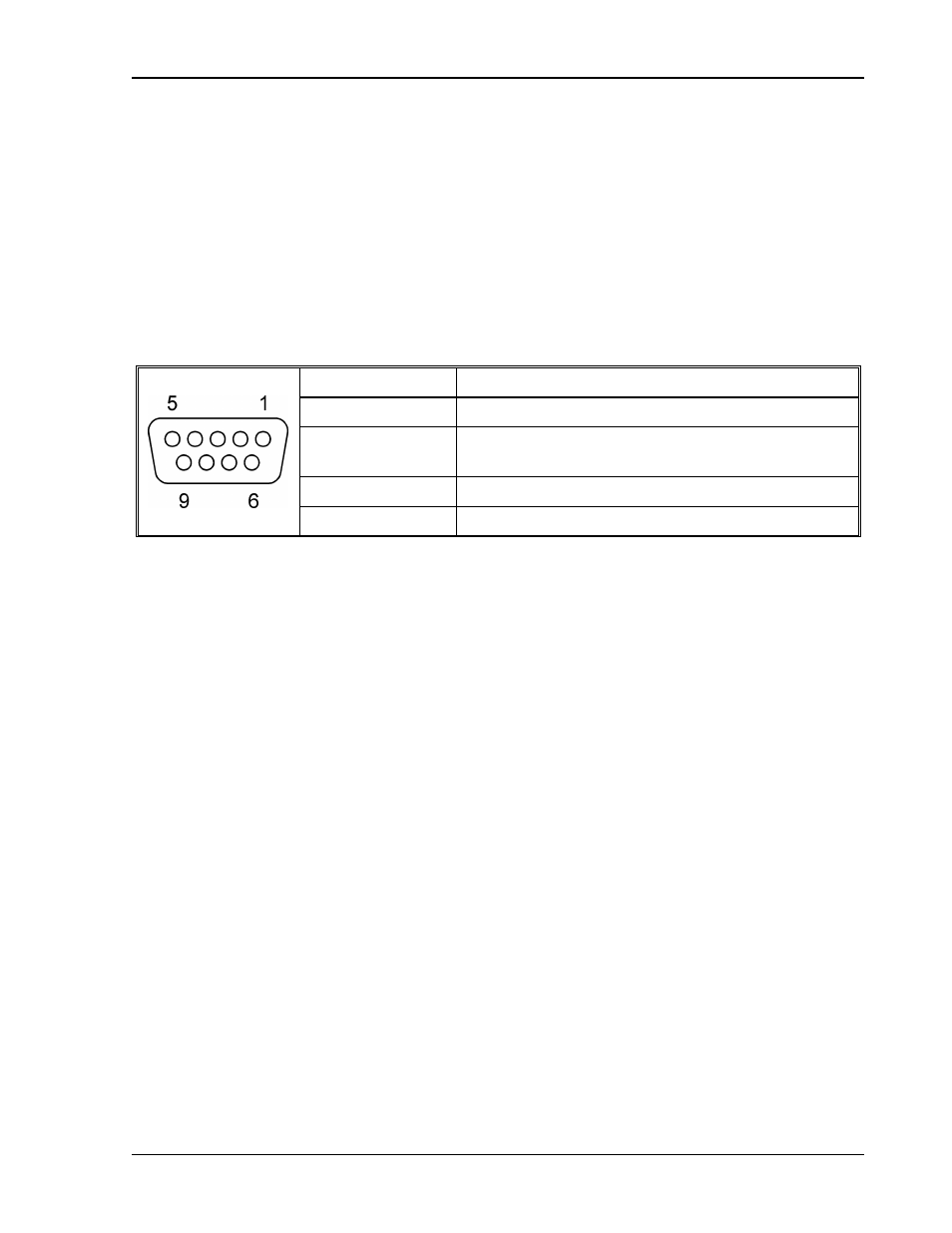8 remote control signal, 1 analog amplitude control, 2 lock to external frequency source – AMETEK CW-P User Manual
Page 37: 8 remote control signal -15, 1 analog amplitude control -15, 2 lock to external frequency source -15

Elgar CW-P Series
Installation
Operation Manual
2-15
2.8 Remote Control Signal
Remote control allows you to set output voltage, lock to an external frequency source,
or send out a TTL compatible sync signal.
The 9-pin Subminiature-D master/slave connector labeled M/S IN on the rear panel
allows you to make the necessary connections for remote control. See Figure 3–10.
Pins 1, 2, 3, 6, 7, and 8 of the M/S IN connector provide control signals for
multiphase/paralleled systems; do not make any user connections to these pins. In a
multiphase/paralleled system, the master unit uses the M/S IN connector for analog
amplitude control or synchronizing to external frequency sources.
Pin Number
Function
4
User Ground (at GPIB Ground potential)
5
Analog Amplitude Control
(0 to 5 VDC for zero to set maximum voltage)
9
Clock Lock Input/Output
1, 2, 3, 6, 7, 8
Do not make connection
Figure 3–10 M/S IN Connector
2.8.1
Analog Amplitude Control
• Set unit to Analog In (analog input state = ON. See Section 5.3.10).
• Set HIGH or LOW range, and maximum output voltage (corresponding to 5 VDC
analog amplitude control) by front panel, GPIB, or RS232 command.
• 0 to 5 VDC will set the output from 0 to the maximum voltage programmed (on the
range selected), as set by front panel controls, GPIB, or RS232 command.
• If needed, set ‘Program keys locked mode.’ See section 5.3.5.
2.8.2
Lock to External Frequency Source
• Set direction of Clock to ‘IN’ (see Section 5.3.9).
• Signal can be 2 to 12V amplitude, and at least 10 microseconds wide. Triggering
shall occur on the leading edge of the pulse. For zero programmed phase delay the
output sinewave shall go from zero to positive.
• Delay angle can be programmed 0 to 359 degrees with a resolution of 1 degree.
• Input impedance is typically 10k ohm.
